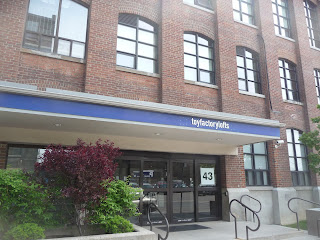
Tunnel boring for Toronto-York Spadina extension has officially begun. "The start of tunnel boring for the Toronto-York Spadina Subway Extension project is an important step as part of our strategy to build a Transportation City," said Mayor Ford. "The subway extension will bring the benefits of rapid transit to residents and businesses in the northwest part of Toronto and will provide a vital link between Toronto and its neighbour, York Region."
Holey, Moley, Yorkie and Torkie are the official names of the four tunnel boring machines that will bore and build the tunnels for the TYSSE project. These names were chosen as part of a contest to name the machines. The TYSSE is an 8.6-kilometre extension of the Toronto Transit Commission's Yonge-University-Spadina subway line from its present terminus at Downsview Station to the Vaughan Metropolitan Centre at Highway 7. It will have six new stations, including one at York University. The expansion of the subway will bring the line into York Region, the fastest-growing region in the Greater Toronto Area (GTA) over the past 10 years. The TYSSE project is targeted for completion in late 2015. The total estimated cost for the project is $2.6 billion.
This subway extension will have a dramatic impact on development in many North York neighbourhoods and in the City of Vaughan. Toronto neighbourhoods such as Downsview, Emery Village, Elia, Humber Summit and Humberlea will benefit the most as far as access to this new line is concerned.
The Toronto - York Spadina Subway Extension is a 8.6km extension from Downsview Station north west through York University within the City of Toronto and north to the Vaughan Corporate Centre in the The Regional Municipality of York. There are six stations sites currently planned: Sheppard Avenue West, on Parc Downsview Park Lands: Finch West station at the corner of Keele Street and Finch Avenue; York University station near the common of York University; Steeles West station at Northwest Gate and Steeles Avenue, east of Jane; Highway 407 station adjacent to Higway 407 and west of Jane Street; and Vaughan Corporate Centre near Highway 7, west of Jane Street.


























